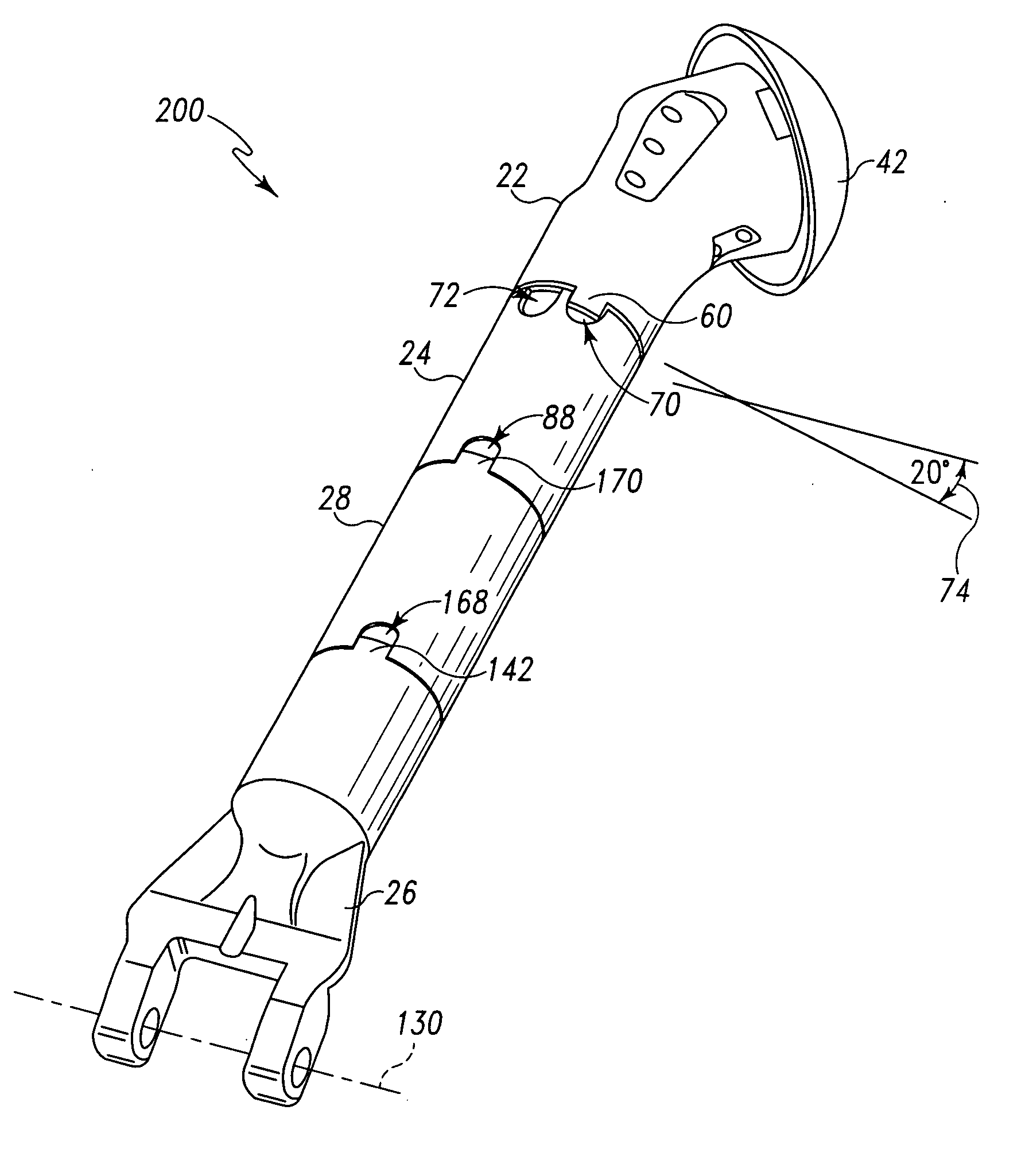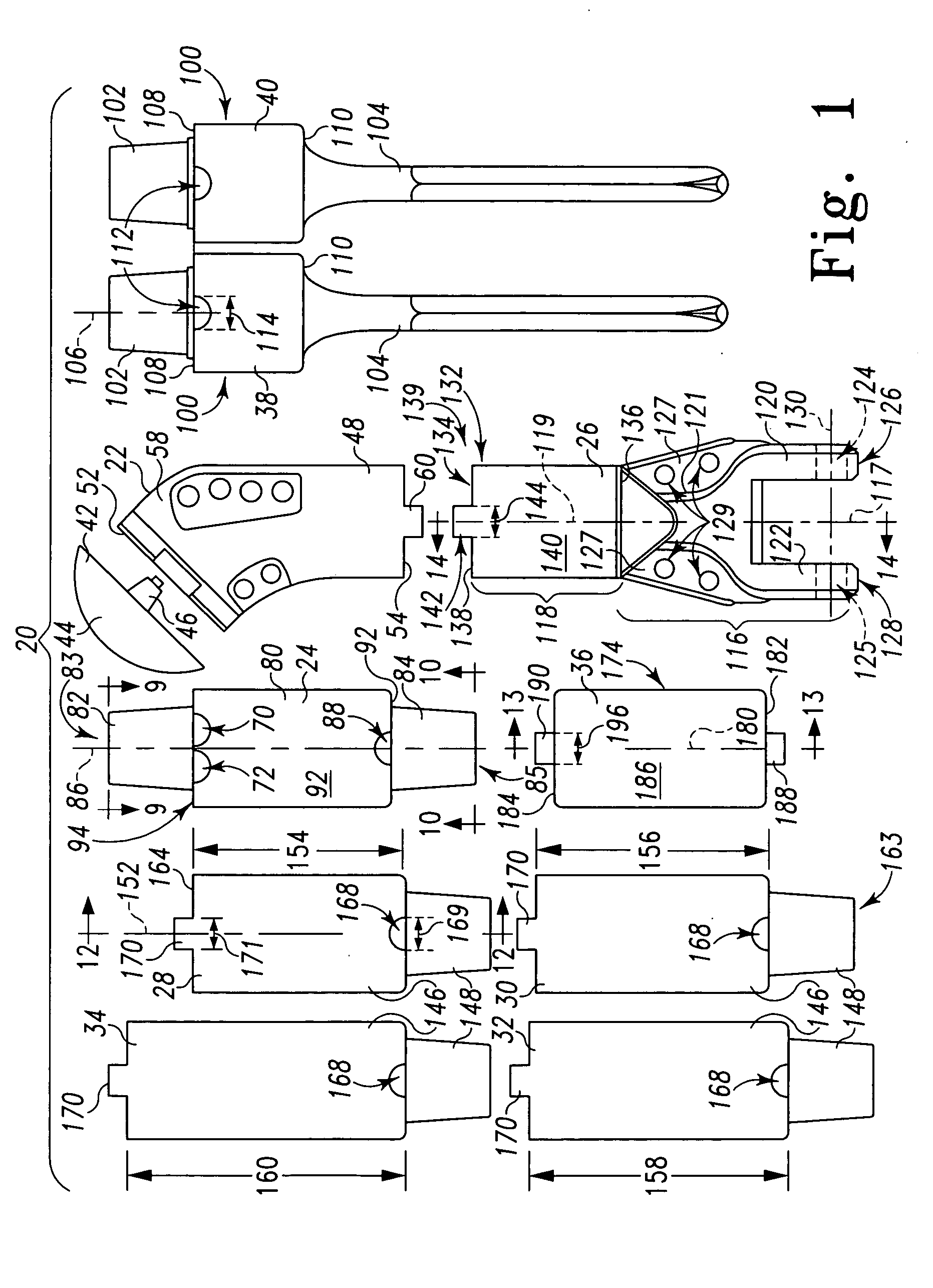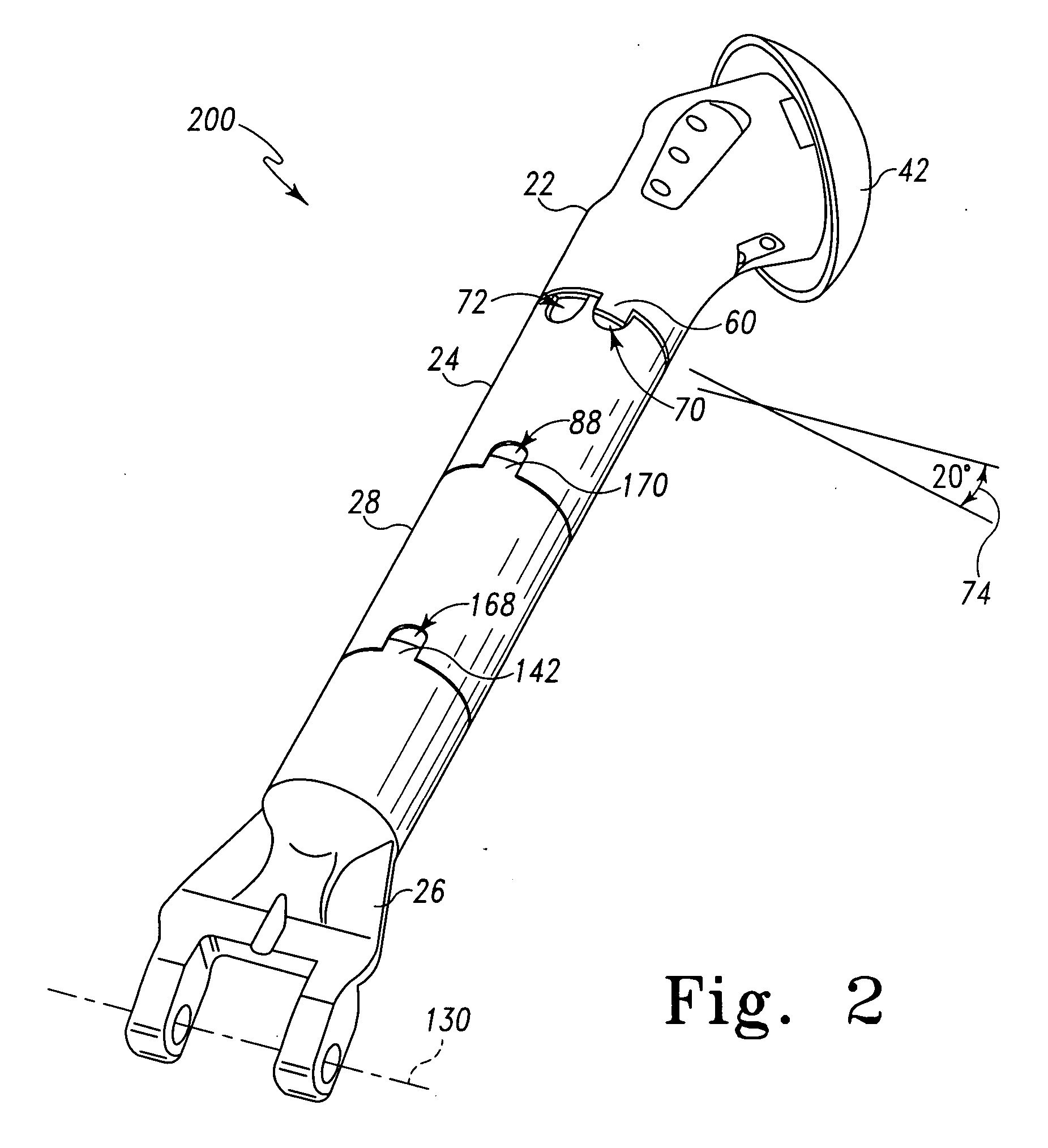Modular long bone prosthesis for partial or total bone replacement
a technology of partial or total bone replacement and modularity, applied in the field of orthopedic prosthesis, can solve the problems of difficult and difficult to replace long bones so easily by prosthesis, etc., to achieve the effect of facilitating rotational alignment of the proximal componen
- Summary
- Abstract
- Description
- Claims
- Application Information
AI Technical Summary
Benefits of technology
Problems solved by technology
Method used
Image
Examples
Embodiment Construction
[0031] For the purposes of promoting an understanding of the principles of the invention, reference will now be made to the embodiments illustrated in the drawings and described in the following written specification. It is understood that no limitation to the scope of the invention is thereby intended. It is further understood that the present invention includes any alterations and modifications to the illustrated embodiments and includes further applications of the principles of the invention as would normally occur to one skilled in the art to which this invention pertains.
[0032] The disclosure contemplates a modular long bone prosthesis system or kit 20 that permits components to be assembled to act as a right long bone total replacement 200 (FIG. 2), a left long bone total replacement 300 (FIG. 3), a proximal long bone replacement 400 (FIG. 4), a distal long bone replacement 500 (FIG. 5) or an intercalary replacement 600 (FIG. 6). Each of the configurations of the prosthesis i...
PUM
 Login to View More
Login to View More Abstract
Description
Claims
Application Information
 Login to View More
Login to View More - R&D
- Intellectual Property
- Life Sciences
- Materials
- Tech Scout
- Unparalleled Data Quality
- Higher Quality Content
- 60% Fewer Hallucinations
Browse by: Latest US Patents, China's latest patents, Technical Efficacy Thesaurus, Application Domain, Technology Topic, Popular Technical Reports.
© 2025 PatSnap. All rights reserved.Legal|Privacy policy|Modern Slavery Act Transparency Statement|Sitemap|About US| Contact US: help@patsnap.com



